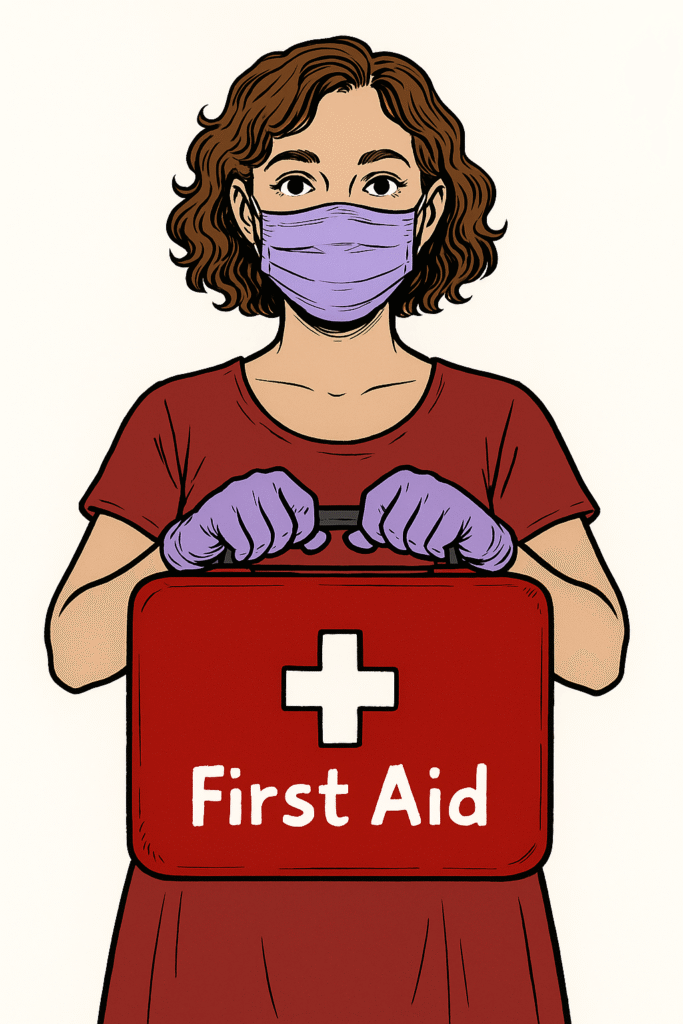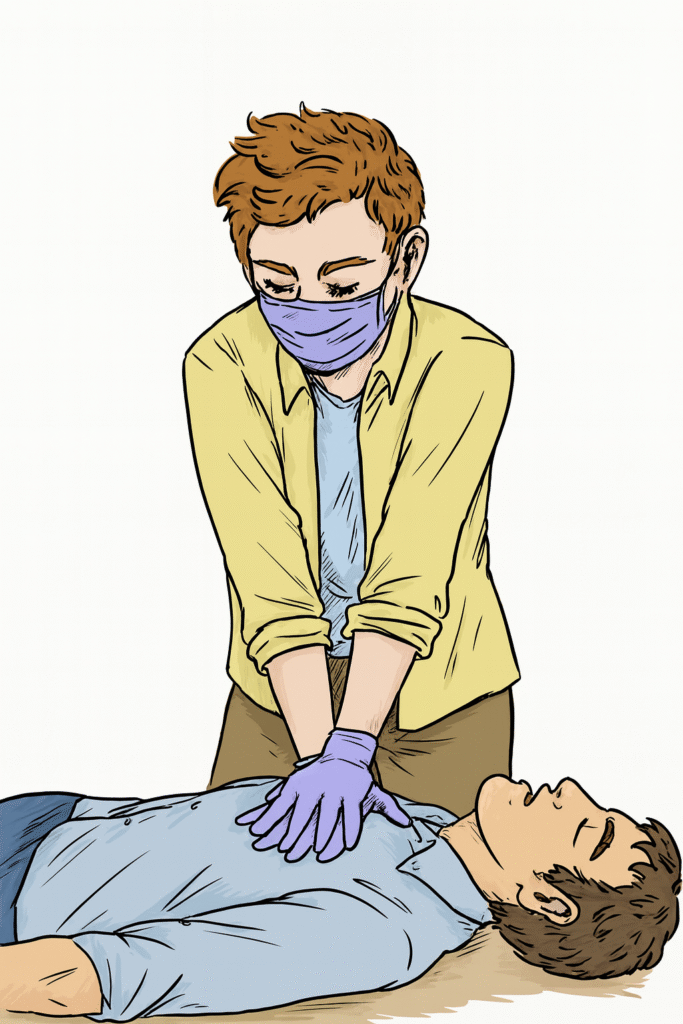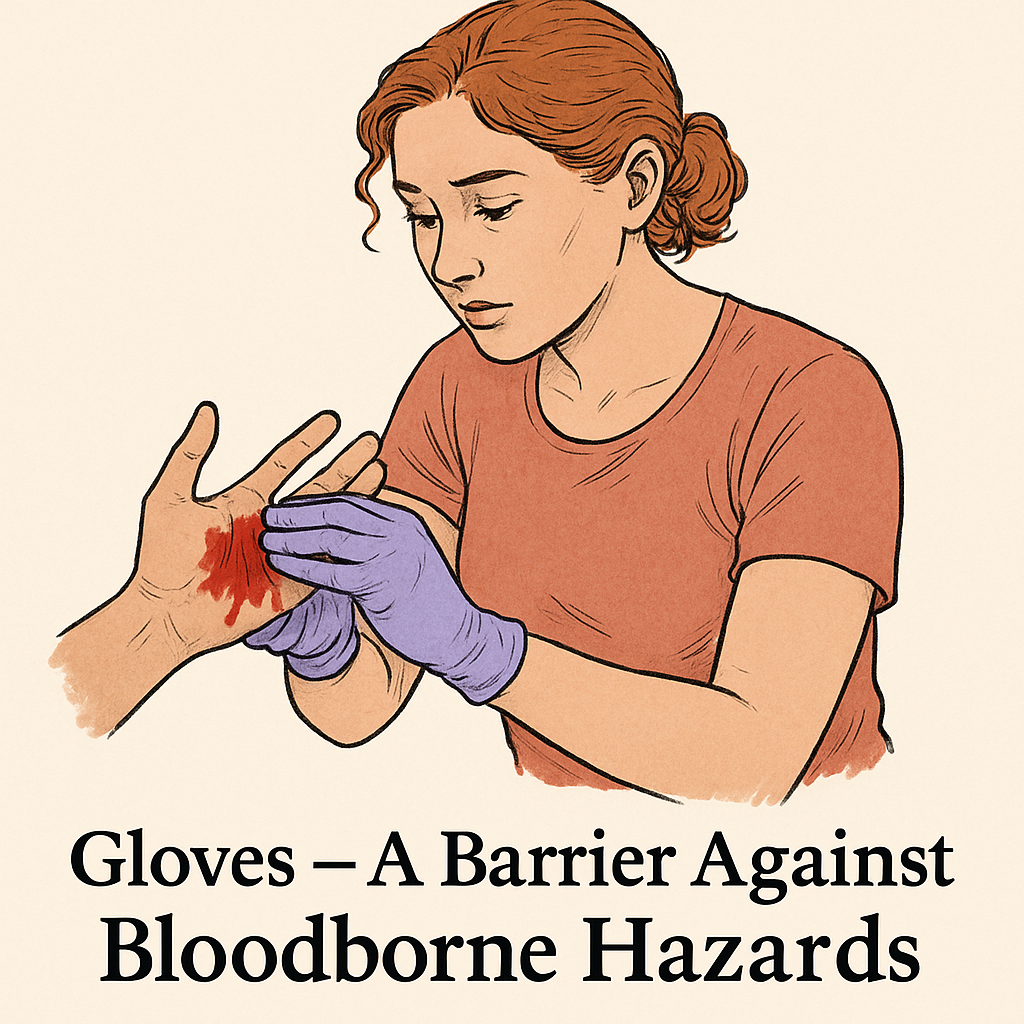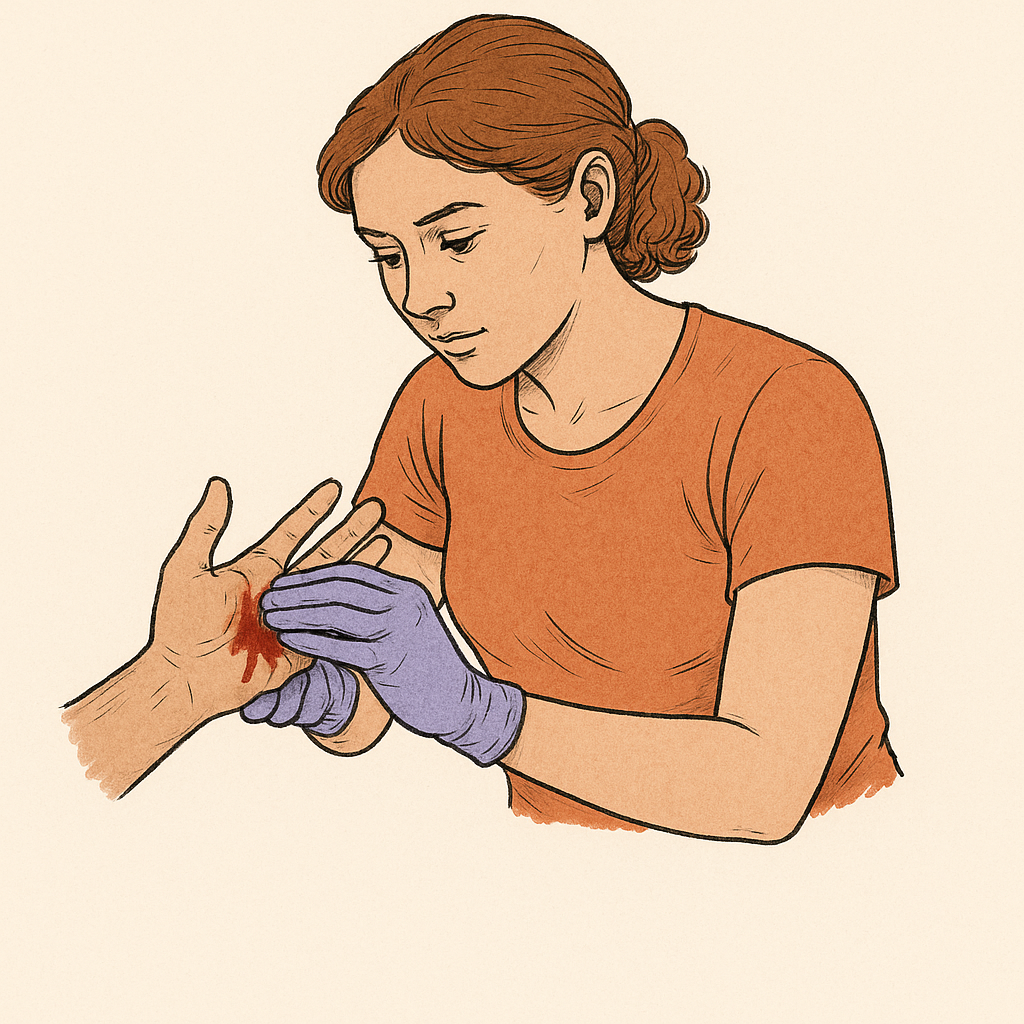PPE in First Aid Giving is one of the most overlooked yet critical aspects of emergency care. While first aid focuses on saving lives, it also comes with risks—exposure to bloodborne pathogens, infectious diseases, and harmful substances.

Personal Protective Equipment (PPE) acts as the first line of defense, ensuring that both the patient and the first aider remain safe.
Using PPE correctly not only promotes effective care but also builds confidence in those administering first aid.
Why PPE in First Aid Giving is Essential
When emergencies occur, the priority is often immediate care. However, without PPE, first aiders may unknowingly expose themselves to infections or chemical hazards. Blood, saliva, vomit, or even airborne particles can pose risks.

Wearing PPE ensures that first aiders protect themselves from these dangers while maintaining high hygiene standards.
PPE also helps prevent cross-contamination—the unintentional transfer of infectious agents from one person to another. This is especially important in workplaces, schools, and healthcare environments where multiple people may require care.
Common Types of PPE in First Aid Giving
Gloves – A Barrier Against Bloodborne Hazards
Gloves, usually disposable latex, nitrile, or vinyl, are the most basic and essential PPE.

They create a barrier between the first aider and potentially infectious material. Always change gloves between patients, and never reuse them.
Face Masks and Shields – Protecting Airways
Masks protect against respiratory droplets and airborne pathogens. Face shields offer additional coverage by safeguarding the eyes, nose, and mouth—areas vulnerable to infection.
Eye Protection – Defending the Eyes from Splashes
Safety goggles or visors are crucial when there is a risk of blood or fluid splashes. Eyes are a direct entry point for pathogens, making protection vital.
Gowns and Aprons – Extra Protection in High-Risk Scenarios
In accidents involving large amounts of blood or hazardous chemicals, disposable gowns or aprons provide an added layer of protection. They prevent contamination of clothes and skin.
Best Practices for Using PPE in First Aid Giving
- Always assess the situation before approaching. Identify potential hazards like blood, glass, or chemicals.
- Put on PPE before contact with the patient or surroundings. Never delay its use.
- Dispose of PPE safely in designated biohazard bags or sealed containers.
- Practice proper hand hygiene before and after using PPE to reduce residual risks.
- Carry a personal PPE kit with gloves, masks, and small protective equipment for readiness.
PPE in Workplace First Aid Programs
Workplaces have a responsibility to supply adequate PPE for emergencies. Employers should:
- Stock first aid kits with disposable gloves, masks, and eye shields.
- Train staff on proper PPE use during first aid drills.
- Regularly inspect and replace expired PPE items.
- Provide clear policies for infection control in first aid situations.
For example, Canadian resources like OHSE.ca emphasize the importance of including PPE in all workplace safety programs, alongside standard first aid kits.
Challenges and Misconceptions
Some people avoid using PPE in first aid because they believe it wastes time or creates barriers between caregiver and patient. In reality, PPE is quick to apply and ensures the first aider is available to help others in future incidents, instead of becoming a patient themselves.
Another misconception is that PPE is only for healthcare workers. In truth, anyone providing first aid—parents, teachers, coworkers—needs it.

Practical Example of PPE in First Aid Giving
Imagine a workplace accident where an employee suffers a deep cut from machinery. Without gloves, the first aider risks contact with blood.
Without eye protection, splashes may affect vision. With PPE in First Aid Giving, the rescuer can control bleeding safely, reducing infection risks while focusing fully on patient care.
Conclusion
PPE in First Aid Giving is not an optional precaution—it is an essential safety measure. Gloves, masks, shields, and gowns are simple yet powerful tools that safeguard both the rescuer and the patient.
By using PPE consistently, first aiders can provide care without hesitation, protect themselves from harm, and prevent the spread of infection.
Every workplace, school, and community should prioritize PPE in First Aid Giving, making it a standard part of emergency preparedness. In the end, protecting yourself is just as important as saving lives.

No comments yet